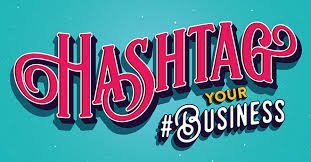
If you haven’t already considered it, you should be looking at hashtags as a means of building your business. While there are many be other ways to build your brand, increase your influence, and generate online traffic, using hashtags on a variety of social media platforms is among the least expensive and easiest ways to do so.
How do hashtags work?
A hashtag that is used usually consists of words or phrases placed together without spaces. They categorize together specific content, filtering your social media posts so that they are both linkable and searchable. When you click on a hashtag, you are immediately brought to a page that has all of the posts utilizing that same hashtag, allowing users to search for posts with relevant content under a common topic.
The widespread use of hashtags began with Twitter but extended to other social media platforms. In 2007 developer Chris Messina proposed that Twitter begin grouping topics using the hash symbol, at Messina’s urging, citizen journalists began using the hashtag #SanDiegoFire to tweet updates on a series of forest fires in San Diego, making the practice of hashtagging take off. Twitter hashtags are still mainly used to denote specific topics of conversation, but there are some differences in how each social media platform utilizes them.
As a result of the filtering process and the discovery of related content, users that search for a hashtag associated with your business or brand will come across your account page. The goal is that, once they do, they will begin engaging with the content and your company and eventually become a new follower and customer. For this reason, hashtags are critical for small businesses because they attract potential customers to your site. They grow your online presence and allow you to facilitate relationships. People who engage online with you and your product help increase your presence. As a result, you can use your hashtags to generate likes and draw consumers to your site.
Can I make hashtags work for my business?
The easiest way to get started to create a hashtag that is unique to your business or brand. You may want to include your brand, business name, or tagline, or think about what is special about your product or service that separates them from others. The most important thing to remember is that you are looking for words or phrases that capture the attention of your users so that it filters their posts about your store, product, or service.
The hashtag should be easy to remember. If the hashtag is too long and complicated, potential consumers won’t remember it. Think easy, unique, and relatable to your business. When using the hashtag, be sure to add it to your Facebook posts, Twitter Tweets, or at the end of your blog instead of just throwing it out to your followers without context. Also, avoid hashtagging too many different things in one post. Twitter allows for only two, but Instagram will allow up to 30. Remember that the goal is to show up in the right searches, so be sure to hashtag relevant keywords, phrases, or photos that will bring new customers to your business.
What are some differences in hashtagging on the specific platforms?
Facebook added hashtag support in June 2013. While it has increased in use, there is still some ground to be gained in Facebook hashtagging. Regardless, clicking Facebook hashtags takes you to an organized list of posts using the same hashtag, and the results are not limited to your Facebook friends. You may want to look at the relevant research regarding hashtag use on Facebook.
Instagram hashtags can be used to complement photos and help discover new accounts and generate business followers. Some hashtags were created specifically for Instagram photo challenges, like those that encourage users to post retro photos.
Google+ search results display on the left side of the page. When you click on a hashtag in Google+, the results will include the original hashtag as well as posts with similar tags or keywords. Google also allows you to search on Facebook or Twitter as an option. You can also use dlvr.it to automatically generate content-appropriate hashtags.
Pinterest uses hashtags to mark and search for content. Clicking on the hashtag in a pin description will take you to results containing the same hashtag, plus pins with the same word or phrase in the descriptions.
Do hashtags do more than generate online traffic and create likes?
Many businesses use hashtags when they host promotions or giveaways. Hashtags are an effective way to announce these events over social media, including business activities, contests, or other promotions. From branded hashtags to community hashtags, you can find many ways to engage your followers and increase consumer interest by mixing up what you do with hashtags. Remember that the goal is to find areas that represent untapped markets and pockets of interest in your product or service, so using Instagram, Twitter, and Facebook business tools may help you find what will work best for your particular industry.
Are there any creative ideas you have for building a following using hashtags? Feel free to comment here.
